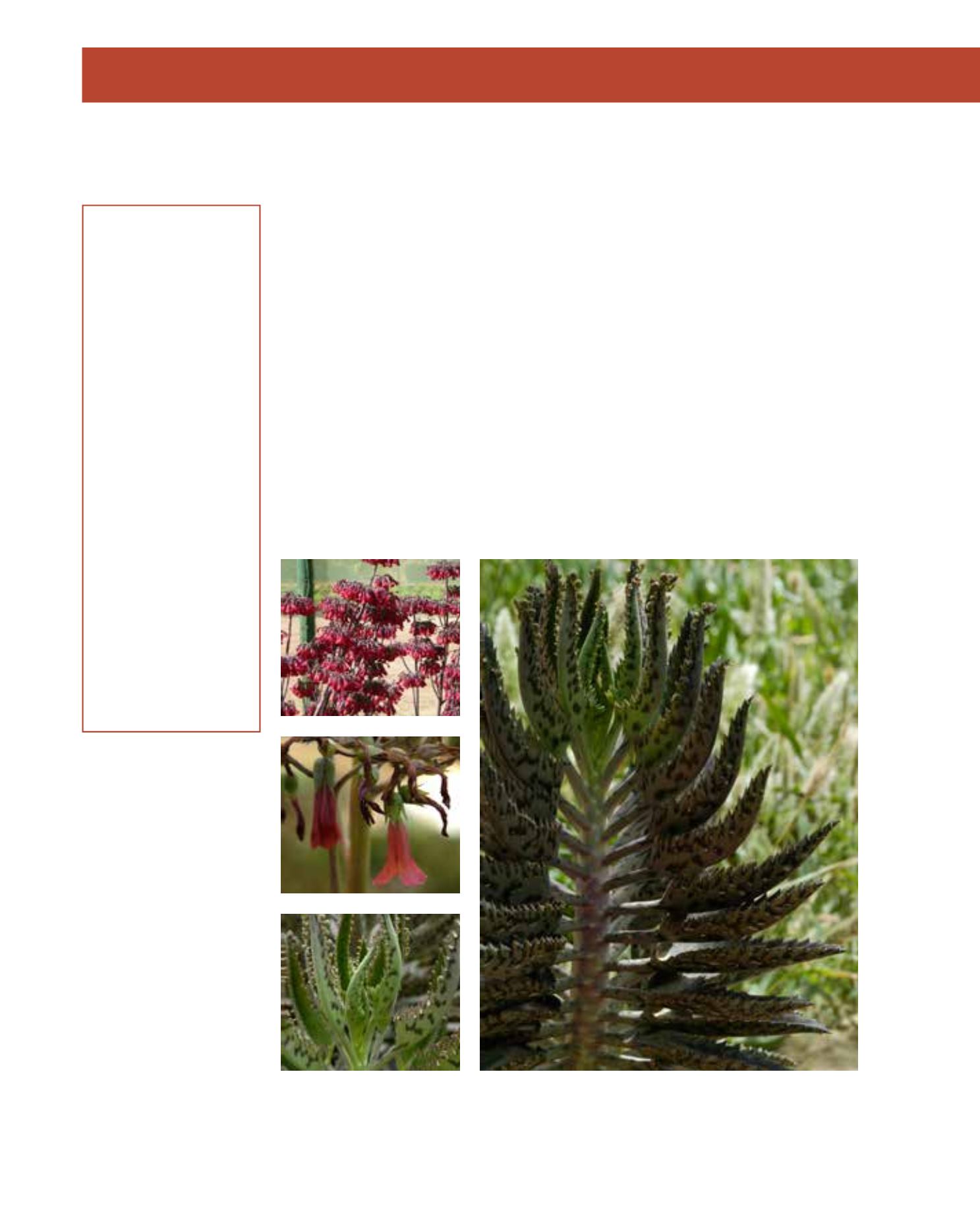

GENERAL
Origin
:
Mediterranean,
sub-tropical
Humidity
:
extremely arid,
very arid, semi-
arid, semi-humid
Propagation :
cuttings
Maintenance :
low
CONDITIONS
Urban climate :
resistant
Dessication :
resistant
Stagnant water :
vulnerable
Irrigation
:
low
Salinity/ppm :
moderate (2000
ppm)
Hardiness
:
0°C
SHAPE
Type
:
cacti, succulents
Height
:
0.5 m-1.2 m
Spread
:
0.3 m-1 m
Foliage
:
evergreen
FLOWER
Colour
:
bright orange,
pastel lilac
Size
:
2 cm
Period
:
May - June
FRUIT
Type of fruit :
capsule
Fruit size
:
1 cm
Toxicity
:
inedible
The Devil’s Backbone originates from southwest Madagascar, where the climate is quite similar
to the dry, hot and rocky conditions in Arriyadh. It makes a gnarled round bush of about 1
metres in height. This succulent grows green stems sparsely aligned with opposite, fleshy leaves
that produce tiny plantlets along the edges. These pseudo-bulbils appear in summer and root
even before touching the ground. This may result in an abundant number of new plants and so
this Kalanchoe has earned the other common name Maternity Plant. The foliage is pale-green
freckled in red, and may bend upwards in dry conditions. Older plants show clusters of bright
orange, tubular flowers at the beginning of summer. In autumn, the floral stems should be cut
back and vigorous growth is achieved after pruning the plant back to the ground. The soil must
be sandy to ensure excellent drainage. Established plants tolerate full sun and heat, but should
be watered frequently. Partially sunny locations are also eligible, especially with some shade in
the afternoon. While the Devil’s Backbone is resilient to most desert conditions, it will be killed
by frost and overwatering. It makes an ideal specimen in rock gardens and can be grown in pots
as a house plant or in containers to embellish a terrace or courtyard. They should be pinched
occasionally to obtain lateral branching and a more compact growth. Maintenance requirements
are low in appropriate locations. A serious hazard is the plant’s toxicity if ingested by livestock.
177
Kalanchoe daigremontiana,
Crassulaceae
Devil’s Backbone,
Maternity Plant
















